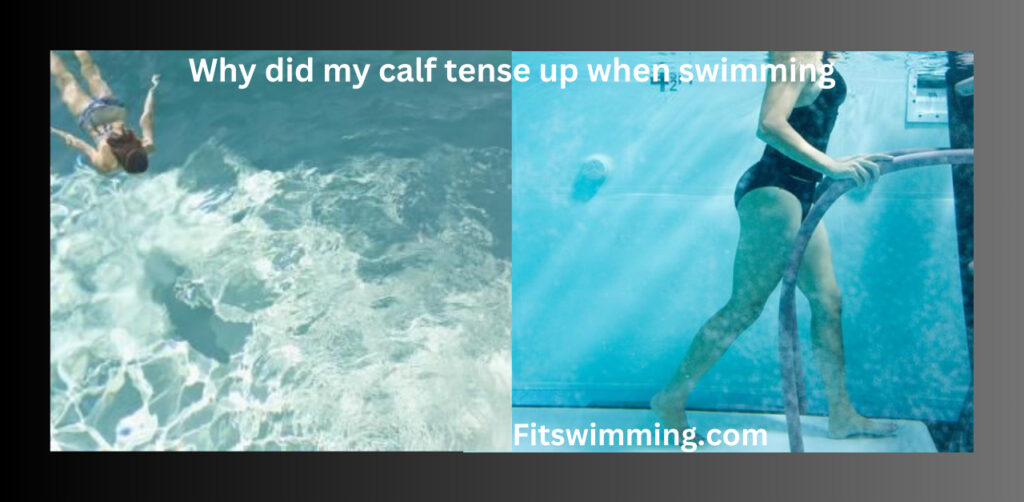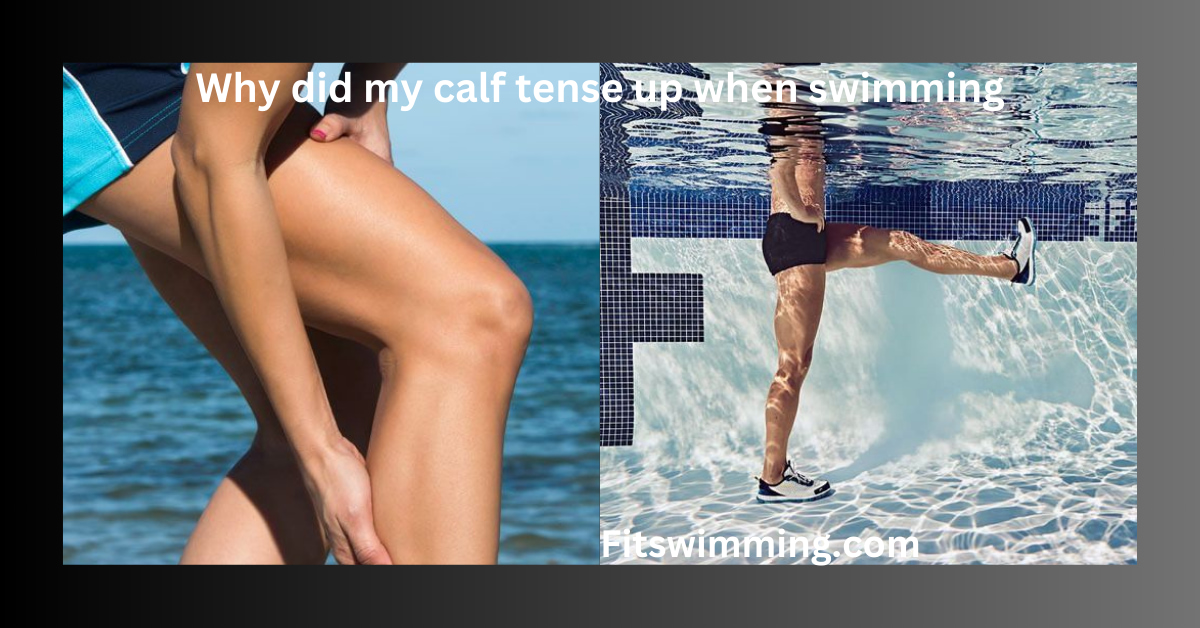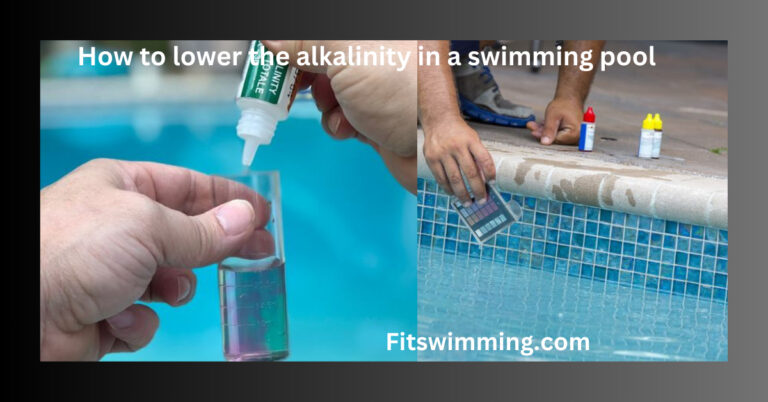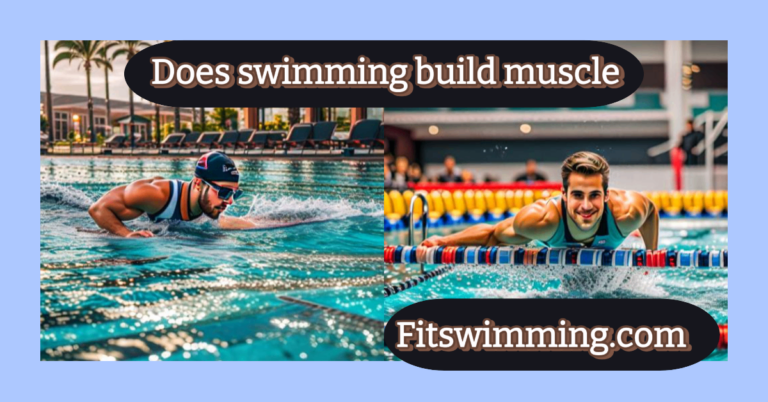Why Did My Calf Tense Up When Swimming?
Have you ever been gliding through the water, enjoying your swim, only to have your calf suddenly seize up in a tight, painful cramp? It’s an unpleasant experience that can turn a relaxing swim into a moment of discomfort and confusion.
If you’re wondering, “Why did my calf tense up when swimming?” you’re not alone. This happens to many swimmers, but knowing why it happens can help you stop it from happening again.
Common Causes of Calf Tension While Swimming
Muscle Fatigue: Swimming is a full-body workout, and your legs play a significant role in propelling you forward. If your calf muscles are overworked or not conditioned for prolonged activity, they may cramp up as a sign of fatigue.

Dehydration and Electrolyte Imbalance: Your body needs enough water and minerals like potassium, magnesium, and sodium to stay healthy. If these levels get too low, your muscles might cramp more easily. Sweating, even in the water, can make you lose these important minerals.
Poor Technique: Improper kicking technique or an awkward swimming posture can put unnecessary strain on your calves. For example, excessive pointing of your toes (plantar flexion) can overstress the muscles and lead to cramps.
Tight Muscles: If you’re diving into the pool without warming up or stretching, tight calf muscles are more likely to cramp. Regular stretching and flexibility exercises can reduce this risk.
Sudden Intensity Changes: Switching from a relaxed pace to an intense sprint can shock your muscles, causing them to contract painfully. Gradual transitions in intensity are better for your body.
Understanding the Science Behind Muscle Cramps
When you swim, your muscles are constantly contracting and relaxing to generate movement. If the muscle fibers don’t receive enough oxygen or if they’re overused, they can spasm, resulting in a cramp. Lactic acid buildup from prolonged exertion may also contribute to this tension.
How to Prevent Calf Tension While Swimming
Stay Hydrated: Drink water before you swim and after you’re done. Consider electrolyte-rich beverages if you’ve had an intense workout or a long session.
Warm Up and Stretch: Before you swim, do some stretches to loosen up your calf muscles. Simple stretches like calf raises, toe stretches, and downward dog poses can be effective.
Focus on Technique: Refine your kicking technique to minimize strain. Practice with a coach or watch helpful videos to make sure your swimming form is easy and effective.
Build Strength and Endurance: Strengthen your calf muscles with exercises like heel raises and resistance training. Gradually increase your swimming intensity to build endurance and avoid overexertion.
What to Do If a Cramp Strikes While Swimming
If your calf cramps during a swim, here’s what you can do:
- Stop Swimming: Move to the pool edge or shallow water if possible.
- Stretch the Muscle: Flex your foot upward (toes toward your shin) to stretch the calf. You can use your hand to assist if needed.
- Massage the Area: Gently massage the cramp to help the muscle relax. Rest and Rehydrate: Take a break to let the tension subside and sip water or an electrolyte drink
Occasional cramps are usually not a big deal, but if they happen often or are very painful, it’s best to see a doctor. Things like bad blood flow, nerve problems, or not getting enough nutrients might be causing them.
Conclusion: Why Did My Calf Tense Up When Swimming?
Calf cramps during swimming are common but preventable. By staying hydrated, warming up, improving your technique, and conditioning your muscles, you can enjoy a smooth, cramp-free swim. The next time you hit the water, you’ll be better prepared to tackle any surprises your calves might throw your way.
If you’re wondering about safety measures like whether it’s safe to swim while shocking a pool, check out our guide!
FAQ’s
Swimming is a great workout, but tight calves afterward can happen for a few reasons. Most commonly, it’s due to muscle fatigue from kicking or improper form that overworks your calves.
Cramps can also happen if you’re dehydrated or don’t have enough minerals like potassium and magnesium. Tight muscles from insufficient warm-ups or stretches before swimming might be another factor.
To prevent this, stay hydrated, stretch your calves before and after swimming, and focus on proper kicking technique. If it persists, consider building calf strength with targeted exercises or consulting a professional.
Tired muscles, dehydration, or a lack of important minerals often cause calf cramps during swimming. Overusing your calf muscles, pointing your toes too much while kicking, or skipping a proper warm-up can also lead to cramps.
To avoid them, stay hydrated, stretch your calves before swimming, and focus on using a relaxed and efficient kicking technique. If cramps persist, building strength and endurance in your calves might help.
Yes, swimming can help strengthen and tone your calves, but it may not significantly increase their size. The kicking motion engages your calf muscles, improving endurance and definition over time.
However, swimming is more focused on lean muscle development rather than building bulk. If your goal is to increase calf size, consider combining swimming with strength training exercises like calf raises or resistance workouts.







